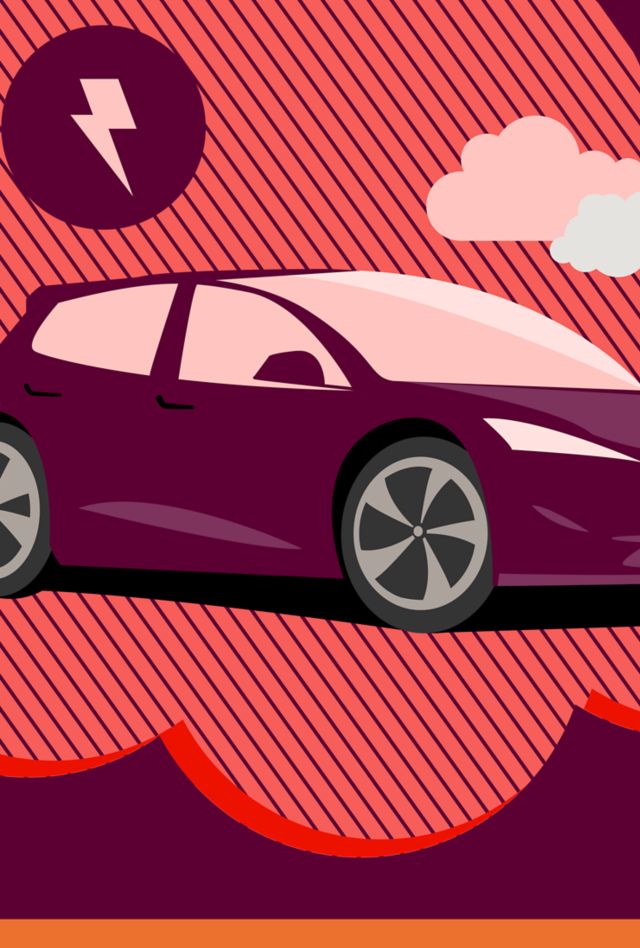Charging Ahead: Insights into Older Adults’ EV Views

Foresight 50+
Foresight 50+ by AARP and NORC offers deep insight into the views and behaviors of Americans 50 and older.
For inquiries, contact us:
September 2024
Nearly two years since the Inflation Reduction Act introduced tax credits aimed at incentivizing use of all-electric vehicles (EVs), older adults remain hesitant to accept the new technology.
The Foresight 50+ Omnibus survey finds that just 3 percent of adults age 50 and older currently drive an EV. Fewer than one in five would consider an EV as a primary (11 percent) or secondary (5 percent) vehicle and about a third (37 percent) would consider purchasing one in the future. But another third (36 percent) say they would never consider switching to an electric car.
Our nationwide study included survey results from 1,010 adults age 50 and older to understand their views on EVs. The study shows reluctance to purchase an EV varies over several characteristics. The most reluctant groups include older adults who are 75 years of age and older, have a high school diploma or less education, live in households that make less than $30,000 a year, are Republican, or live in the Northeast, Midwest, or South.
Only some adults age 50 and over are willing to purchase an EV now or consider purchasing one in the future.
Older adults are willing to consider transitioning to EVs in the future. When asked when they might be ready to transition to an automobile market consisting entirely of EVs, 9 percent of older adults say they’re ready now, 13 percent could accept an EV-only market by 2030, and 15 percent could accept the change by 2040. However, 41 percent say they will never be ready to accept only EV options.

Older adults with more education are more ready to transition. Those with graduate degrees are three times as likely as those without (22 percent vs 6 percent) to say they are ready for an EV-only market now. And men are twice as likely as women (13 percent vs 5 percent) to accept an EV-only market, as are those ages 50-65 versus those 65 and older (12 percent vs 6 percent).
Some older adults are more likely than others to say they will never be willing to purchase an EV. These include:
- Over half of Republicans (53 percent)—compared to a third of independents (36 percent) and a fifth of Democrats (19 percent).
- Almost half of adults 75 and older (46 percent) along with 39 percent of adults 65 to 74 years old and 30 percent of adults 50 to 64 years of age.
- Half of older adults with a high school diploma or less (47 percent)—compared to only 18 percent of older adults with more than a bachelor's degree.
- 42 percent with an annual household income of less than $30,000—compared to 19 percent of older adults with an annual household income of $100,000 or more.
- 45 percent of older adults living in the Midwest, 42 percent of older adults in the Northeast, and 38 percent in the South, compared to only 18 percent in the western region of the United States.
Range anxiety, charging infrastructure, and initial costs are the top concerns about EVs among older adults.
Older adults cite many concerns about EVs, but some rise to the top. Range anxiety is most commonly cited, followed by charging infrastructure and initial cost.

These concerns vary by income and gender, however. Older adults with an annual household income of $100,000 or more (33 percent) and men (26 percent) are more likely than those in all other income brackets and women (15 percent) to cite range anxiety as their top concern.
Older adults with an annual household income of less than $30,000 (23 percent) are also more likely than those with incomes of $100,000 or more (8 percent) to view the initial costs as their top concern when it comes to EVs.
Most older adults view EVs as less affordable than gas-powered vehicles.
EVs are viewed as less affordable than gasoline-powered vehicles by the majority of older adults.

Methodology
Our findings come from online and telephone (landline and mobile) interviews with 1,010 U.S. adults on the Foresight 50+ Omnibus Survey from May 16-20, 2024. The margin of sampling error was +/- 4.2 percentage points.
This survey is part of a new series of Foresight 50+ Omnibus Surveys focused on amplifying the voices of people age 50 and over. Now more than ever, policymakers and others need scientifically rigorous, real-time data to help them improve policies and programs for an aging population. The Foresight 50+ FastTrack series—a set of periodic surveys using the Foresight 50+ panel—will meet this need by regularly providing insights on an array of topics that might otherwise be unavailable to the public. The series will also showcase ways in which your organization can use the panel to answer your questions about the highly influential 50+ demographic.
The large Foresight 50+ by AARP and NORC panel can oversample a variety of target groups, such as Medicare beneficiaries, caregivers, those with various health conditions or functional limitations, veterans, frequent travelers, and others. Combined with our affordable TrueNorth methodology, Foresight 50+ by AARP and NORC can incorporate data from lower-quality sample sources to gain insight into even smaller subpopulations, such as people with food allergies, socially isolated or homebound individuals, and high net-worth individuals.
For more information on our other surveys or to learn how we can customize a survey of this demographic to your needs, visit Foresight 50+ or email Foresight50-bd@norc.org. To learn more about how NORC delivers objective, nonpartisan insights and analysis that decision-makers trust across other issue areas and demographics, continue to explore NORC.org.





